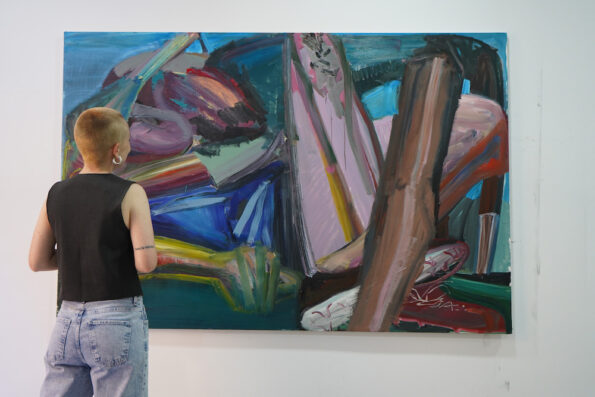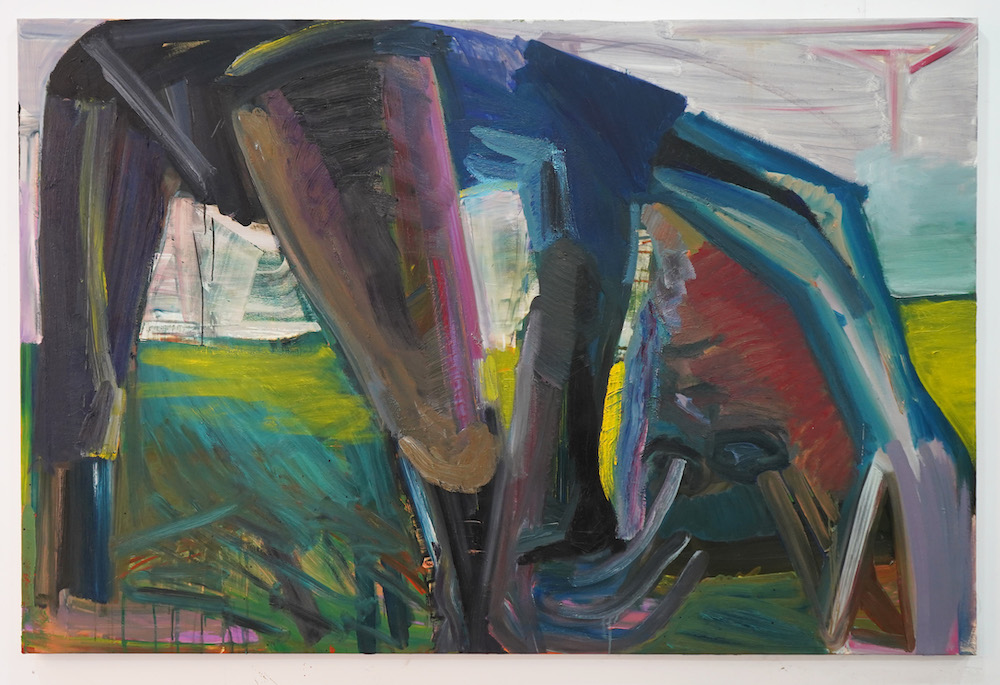Search
To search for an exact match, type the word or phrase you want in quotation marks.
A*DESK has been offering since 2002 contents about criticism and contemporary art. A*DESK has become consolidated thanks to all those who have believed in the project, all those who have followed us, debating, participating and collaborating. Many people have collaborated with A*DESK, and continue to do so. Their efforts, knowledge and belief in the project are what make it grow internationally. At A*DESK we have also generated work for over one hundred professionals in culture, from small collaborations with reviews and classes, to more prolonged and intense collaborations.
At A*DESK we believe in the need for free and universal access to culture and knowledge. We want to carry on being independent, remaining open to more ideas and opinions. If you believe in A*DESK, we need your backing to be able to continue. You can now participate in the project by supporting it. You can choose how much you want to contribute to the project.
You can decide how much you want to bring to the project.

If there is a format that has endured over the centuries in Art History, it is painting. The desire to represent what we see is directly linked to the magic of the awakening of consciousness, that is, looking around to try to understand an environment as dangerous as it is fascinating. Although painting is the conquest of an endless number of elements, perseverance and precision are needed to awaken each and every one of its attributes. Sometimes I think that it isn´t the lack of time that tortures us, but the loss of attention. It’s normal that they want to distract us with endless histories (or stories) because whoever pays attention, understands. And whoever understands, wins.
Thus, we must celebrate that our youngest artists choose this medium to express themselves, because being consistent, methodical and patient today seems to me to be an extremely rebellious, radical and subversive exercise. That is why we are speaking to one of our youngest and most promising painters, Irene Anguita, about her upcoming participation in one of the most cutting-edge residencies for young painters in the UK, the Turps Studio Programme at the Turps Art School in London.
In this interview, Anguita tells us what it meant to get this residency and talks about her intimate relationship with painting, about artistic crises and, above all, how perseverance and effort can lead you down the path of attention, a key stop on any journey. An essential read for this slow, sleepy August.
Hello Irene. How are you? Before we talk about your upcoming participation in the Turps Studio Programme residency at the Turps Art School in London, whose entry I suppose is difficult to get, I would like you to tell us a little about how you started and what it’s like to work in a format such as painting. How does a young artist find her means of expression?
I’m very well and very excited about what is coming this year. I suppose that one’s means of expression is found by experimenting and putting oneself outside of one’s comfort zone. I think that consistency is essential, not only within the studio but also by being attentive to what happens in the art world. It is this combination that helps an artist find her identity and, therefore, her means of expression.
Do you see yourself experimenting in a different format? Is a medium intrinsically linked to an artist or, on the contrary, is it something that can change throughout their career?
I was always quite clear that my medium is painting. However, I think that artists must be open to change in order to draw positive conclusions and, of course, avoid formulas. I think that art is an exercise in thought and if a medium stops responding to the artist’s needs, she must mutate to other places, perhaps a round trip, perhaps a trip with no return.
In my case, painting is a place where I have always felt free to play and I have been able to do so in a more or less carefree way. I think that idealizing the medium or feeling cloistered within it would be sufficient reason to look for alternatives to my usual practice.
I love your black and white series. You have work that touches on iconic representations in the history of art, such as Saint John or Narcissus. What is disruptive about your way of reinterpreting the great myths of the past?
Thank you. My charcoal pieces are a response to having an artist’s block with painting. For me, painting requires a lot of commitment and time, but drawing is a medium in which I can free myself and think more immediately. I was going through a painting crisis, nothing really dramatic, something to learn from, so I decided to move on to something more elementary like charcoal.
For me, looking at art history is a necessity. I don’t necessarily consider it to be a disruptive interpretation, I think it’s rather a dialogue. Some of my works are images of art reinterpreted from a current perspective. How disruptive they may seem may be their own contemporary intentionality.
Let’s talk about Turps. It’s a fairly prestigious residency with a tremendously innovative character. Was it difficult to get it?
The first time I applied I had to go through an interview and then they told me that I had been selected. I think that having done residencies before, such as PADA Studios in Portugal or Ladrón de Guevara in Mexico, helped me get in.
I am very excited about the challenge I face starting in September at Turps Art School. The program is specialized in painting and 15 painters will share a studio for 9 months. For me, this type of coexistence is essential to continue growing and learning about my practice.
What do you expect after your participation? Are residencies a key element to open up to other markets?
I think that doing artistic residencies is a good way to generate community. A few days ago I finished my stay at the Celestino Cuevas artistic residency and, as in previous residencies, I have generated synergies that ended up becoming both work relationships and friendships.
I hope that my participation in Turps can bring me this. I also hope to learn from the artistic context in London that I do not yet know and that I consider an international reference for painting. I also hope to surprise myself. A change of context always provides me with new ideas in my ways of doing things, and I always draw positive conclusions from these challenges.
And to finish this brief but great interview, if you could choose, is there any space, not necessarily a gallery or museum, where you would love to exhibit?
If I would let myself dream, I would love to be able to exhibit in a great museum like the Tate, the Tokyo Palace or the Reina Sofía, although to get to those museums you need to have a long journey. For me, though, more than the specific space, what would be a true dream would be to exhibit alongside my idols, like Miriam Cahn, Cecily Brown or Dana Schutz.


Jesús Nebreda Galíndez is a specialist in design and art for digital platforms with a Master’s degree in Cultural Management from the City University of London whose thesis was on Fashion as one of our latest societal cultural products. Jesús has worked for institutions such as the British Museum and Saatchi Gallery and on art and design retail platforms such as Pamono and more recently Artsy. He is a regular contributor writing reviews and interviews for the publications METAL, Acero and Neo2.
"A desk is a dangerous place from which to watch the world" (John Le Carré)